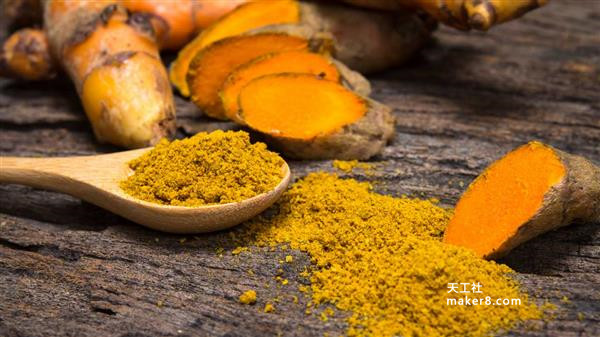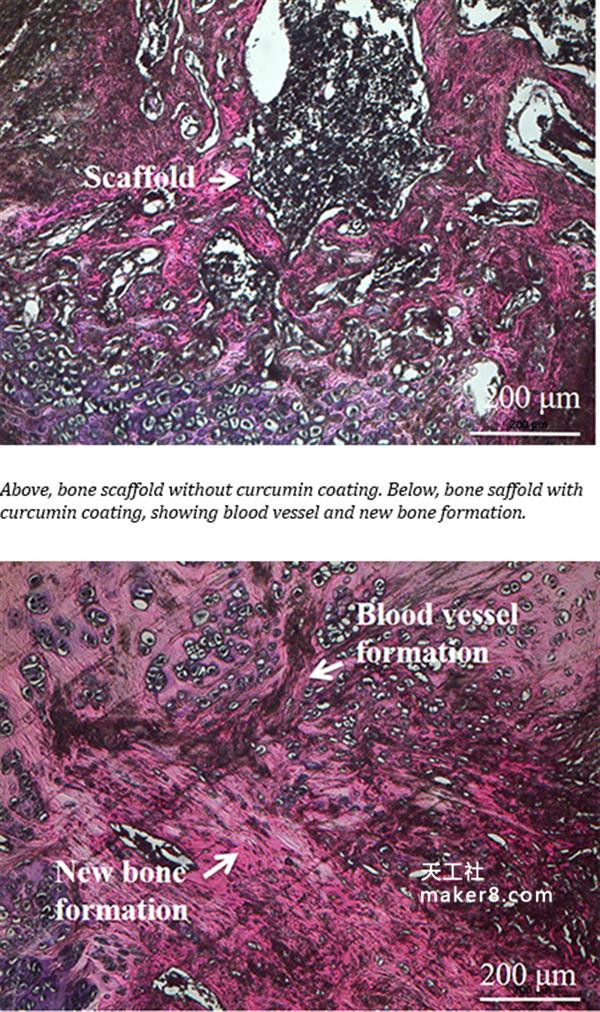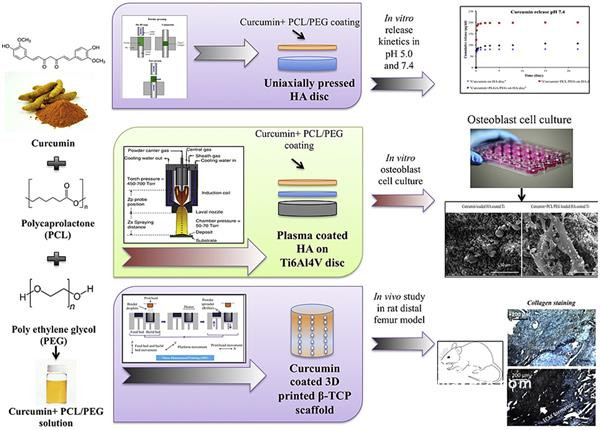Release date: 2018-05-21
A recent study by researchers at Washington State University showed that state-of-the-art medical technology may still require the help of some traditional therapies. The WSU team developed a 3D printed ceramic stent for bone tissue regeneration and found that when the stent is coated with naturally occurring compounds in turmeric powder, bone regeneration capacity can be increased by 30% to 45%. The project was funded by the National Institutes of Health and led by Professors Susmita Bose, Herman and Britta Lindholm.

As an indispensable flavor of various curries and other dishes, turmeric has long been highly regarded. The flavor extracted from the root is mainly composed of curcumin, which has antioxidant, anti-inflammatory and bone-enhancing capabilities, and also helps prevent various cancers. Turmeric has been used as a drug for centuries, especially in Asian countries, but it is usually taken orally, which is not the most effective way to absorb curcumin. The project is able to directly exploit the advantages of curcumin to achieve more effective results.

The 3D printed bone scaffold is made of a biocompatible ceramic material similar to the materials currently used for tissue regeneration studies. These scaffolds are implanted into cells, and the cells gradually fuse together to form new tissue, depending on the environment in which they are located. A problem that affects many of the bone regenerative drugs currently used to treat osteoporosis and other diseases is the unbalanced remodeling cycle that they may produce in natural bone, as well as the poor quality bone that can be formed.
The research team decided to try to use the naturally occurring compounds in turmeric to stimulate bone growth. They encapsulate curcumin in a hydrophilic polymer, which is a macromolecule, so over time, curcumin can be gradually released from the ceramic scaffold. Coating 3D printed stents with this organic compound has been very successful. Studies have shown that it increases the survival and proliferation of new bone cells and blood vessels in surrounding tissues while accelerating the healing process.

Researchers are also investigating other natural remedies, including compounds from aloe vera, saffron, vitamin D, garlic, oregano and ginger. Bose focuses on compounds that may contribute to bone disease, including those that promote bone growth or have anti-inflammatory, infection-control or anti-cancer properties.
Source: Tiangongshe
There are mainly the following parts: 1. Sampling swab with disposable sterile plastic rod/rayon head 2. Sterile sampling tube containing 3ml of virus maintenance solution (gentamicin and amphotericin B are selected to better inhibit the fungus in the sample. Avoid the human sensitization reaction that may be caused by penicillin in the traditional sampling solution.) In addition, there are additional parts such as a tongue depressor, a biosafety bag, etc. Intended to use 1. It is used for monitoring and sampling of infectious pathogenic microorganisms by disease control departments and clinical departments. It is suitable for sampling of influenza virus (common influenza, highly pathogenic avian influenza, H1N1 influenza virus, etc.), hand, foot and mouth virus and other types of viruses. It is also used for sampling of Mycoplasma, Chlamydia, Ureaplasma, etc. 2. It is used to transport nasopharyngeal swab samples or tissue samples from specific parts from the sampling site to the testing laboratory for PCR extraction and testing. 3. It is used to preserve nasopharyngeal swab samples or tissue samples from specific parts for necessary cell culture. The virus sampling tubes are loaded with infectious substances, and some are even highly pathogenic substances. Therefore, the requirements for packaging containers are very strict, and three requirements must be met at the same time: 1. The safety of transportation. Ensure that the sample does not leak during transportation. Sampling tubes that comply with WHO regulations and biosafety regulations. 2. The security of preservation. Ensure that the sample does not leak during storage. Sampling tubes that comply with WHO regulations and biosafety regulations. 3. The validity of the sample. Make sure that the sampling tube itself will not have a toxic effect on the sample.
Virus Sampling Tube,Virus Sampling Kit,Disposable Vtm Sampling Kit,Vtm Sampling Tube With Swab
Jilin Sinoscience Technology Co. LTD , https://www.jilinsinoscience.com